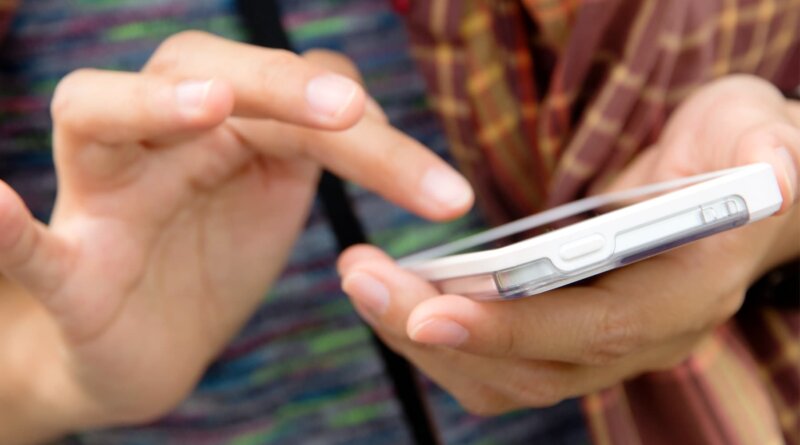Your Smartphone Is a Haven for Allergens
By Cara Murez
HealthDay Reporter
THURSDAY, Nov. 10, 2022 (HealthDay News) — That smartphone in your hand could be triggering your allergies, a new study by an 18-year-old high school student suggests.
A science fair project by Hana Ruran, of Hopkinton, Mass., found that cellphones are often loaded with cat and dog allergens, bacteria and fungi.
“I have my phone always with me. It’s always in my hand. I never put it down for anything,” said study author Hana Ruran, a senior at Hopkinton High School. “And I have a lot of allergies. I just got interested in doing something that affects me.”
The bottom line: It’s a good idea to wipe down the surface of your phone, especially if you have allergies.
The research is being presented Thursday at the American College of Allergy, Asthma and Immunology (ACAAI) annual meeting in Louisville, Ky.
“The study demonstrates exposure to inhalant allergens and molecules that trigger innate immune reactions from a source most people haven’t considered,” study co-author Peter Thorne, Ruran’s mentor, said in an ACAAI news release.
“If you have allergies or asthma, you may want to think about cleaning your smartphone more often to minimize exposure to these allergens and asthma triggers,” said Thorne, a professor in the University of Iowa College of Public Health, in Iowa City.
For the study, the researchers created phone models that simulated the size and surface of a real phone and worked with 15 volunteers. Each participant used electrostatic wipes, running them across the models. The volunteers repeated this several times a day for a week.
Thorne’s lab tested the wipes to see what was captured.
The investigators found elevated and variable levels of what are called β-D glucans (BDG). These are a marker for mold and can impact airways. Ruran and Thorne also found variable levels of endotoxin, a type of bacteria.
“They were different on different phones, but they were very highly prevalent,” Ruran said.
The phones of pet owners contained a lot of cat and dog allergens, but the phones of people who did not report household pets also tested positive for pet allergens, Ruran said.
She also tested products to try to determine what might clean the allergens, bacteria and fungi off the phone.
Ruran found that certain harder-to-access chemicals worked better, depending on whether the person was wiping their phone for an allergen, a fungus or a bacteria. They included combination chlorhexidine/cetylpyridinium for reducing BDG and endotoxin. For reducing cat and dog allergens, combination benzyl benzoate/tannic acid worked best.
Isopropyl alcohol wipes worked, too, but not as well, Ruran said. Wiping with a dry cloth didn’t work.
About 85% of U.S. households have smartphones, according to the 2018 U.S. Census. People view their phones about 14 billion times a day, the study authors noted.
Dr. Payel Gupta, an allergist and medical director for LifeMD in New York City, said allergens are everywhere. But she wondered if the phone cases had different textures, some of which might grab onto particles more easily.
“The important thing to remember is that allergens can stick to our hair. They can stick to our clothing. They can stick to our shoes. And, of course, then it makes sense that they could stick to our phone, phone covers, things like that,” said Gupta, who was not involved in the study.
But allergists don’t want patients to become overly worried about this, Gupta said.
At certain times of year, people with seasonal allergies can help themselves by taking off their shoes when they go inside from outdoors, Gupta said. They can change their clothes and wash their hands.
Noting this study, it may also be helpful to wash your phone cases, Gupta said, and to find out what might be a safe way to clean your phone screen without damaging it.
“If you’re really a severe allergy sufferer, maybe you take a shower as soon as you walk in the house, but definitely before you go to bed so that if the allergens are in your hair, you can wash your hair,” Gupta said.
If you’re allergic to dust mites, which is really an allergy to the mites’ poop, you should dust with a damp cloth rather than a dry rag, Gupta advised. Wash your sheets weekly in hot water to rid them of the dust mite debris.
For those using a smartphone without regularly cleaning it, she suggested trying not to touch your eyes right after you’ve touched your phone.
“Especially if your allergies do affect your eyes,” Gupta said
Ruran, meanwhile, said she’s a little more aware of possible contaminants her phone is picking up.
“I really love science and I’m interested in the environment and how we could maybe improve the environment by developing something novel that could help reduce exposures,” Ruran said. “It makes me think a little bit more about my phone.”
Still, “I don’t know if I’m still good about cleaning my phone,” she admitted.
Findings presented at medical meetings should be considered preliminary until published in a peer-reviewed journal.
More information
The U.S. National Institute of Environmental Health Sciences has more on allergens.
SOURCES:Payel Gupta, MD, FACAAI, medical director, LifeMD, New York City; Hana Ruran, high school senior, Massachusetts; American College of Allergy, Asthma and Immunology annual scientific meeting, Nov. 10 to 14, 2022, Louisville, Ky.



